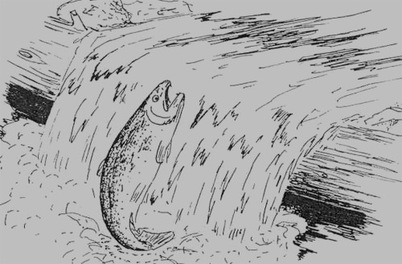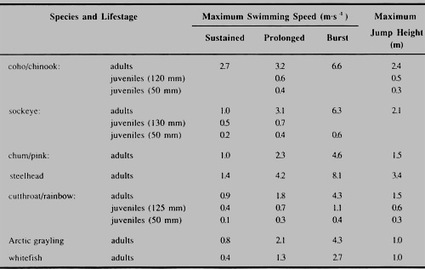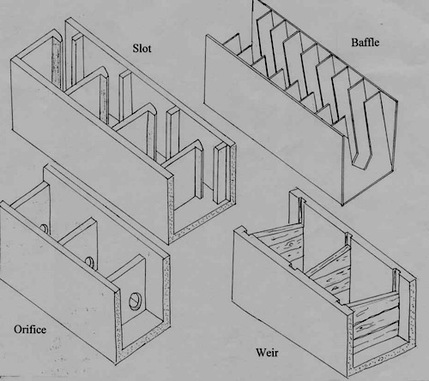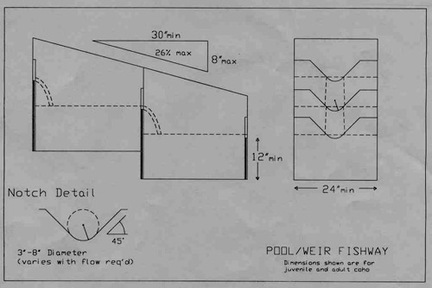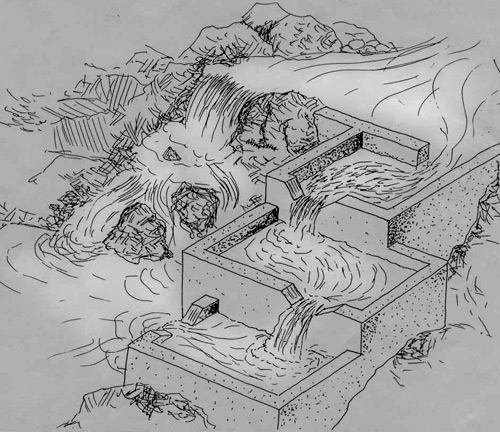Featured Reports - Fishways
|
Background Migration is integral to the lifecycles of salmonoids. Most people think of spawning but all stages in the life of a salmon are marked by migration:
Barriers to migration can be caused by:
Assessment Questions to ask:
Historical records are often useful for assessing the effects of recent barriers. The potential barrier itself can be assessed by measuring water depth, velocity and drop heights(s) over the range of possible flows. Remember that a pole with a depth at least 1.25 times the height of jump is required. Sustained swimming speeds are the swimming velocities that can be maintained for extended periods of time. Prolonged speeds are swimming velocities that can be maintained for passage through difficult areas. Burst speeds are for escape and feeding. In addition to a species' maximum jump height, the ability to jump a vertical obstacle is also related to the depth of water from which a fish can leap. Designs Fishway designs should be chosen based on:
Small Stream Applications The best design for most small streams is the pool and weir. This design will function over a wide range of flows, resist plugging with debris and can be built with relative ease from a range of materials. The jump height varies with species and age of fish. Generally speaking, it is better to have a few jumps of maximum height than many of minimum. However, if chum and pink spawners are to use the fishway, it should be designed such that the fish do not have to jump clear but can swim up a "column" of water. Material & Methods Pool and weir fishways can be constructed (on-site or prefabricated) from a variety of materials. Logs and rocks Cost: very low Durability: moderate Site Access: foot (assuming sufficient materials at site) Installation: skilled Plywood and studs (pressure treated) Cost: low Durability: moderate / good Site Access: foot Installation: easy (if prefab) Laminated timber (cedar or pressure treated) Cost: low Durability: good Site Access: improved foot Installation: skilled Concrete (precast boxes) Cost: high Durability: good / excellent Site Access: road Installation: very skilled Concrete (cast in place) Cost: moderate / high Durability: excellent Site Access: improved foot Installation: very skilled Rules & Regulations Any fishway work requires the appropriate approvals and licenses from MoELP and DFO. Municipalities may also have regulations governing this type of work. Consult with your community advisor. |

